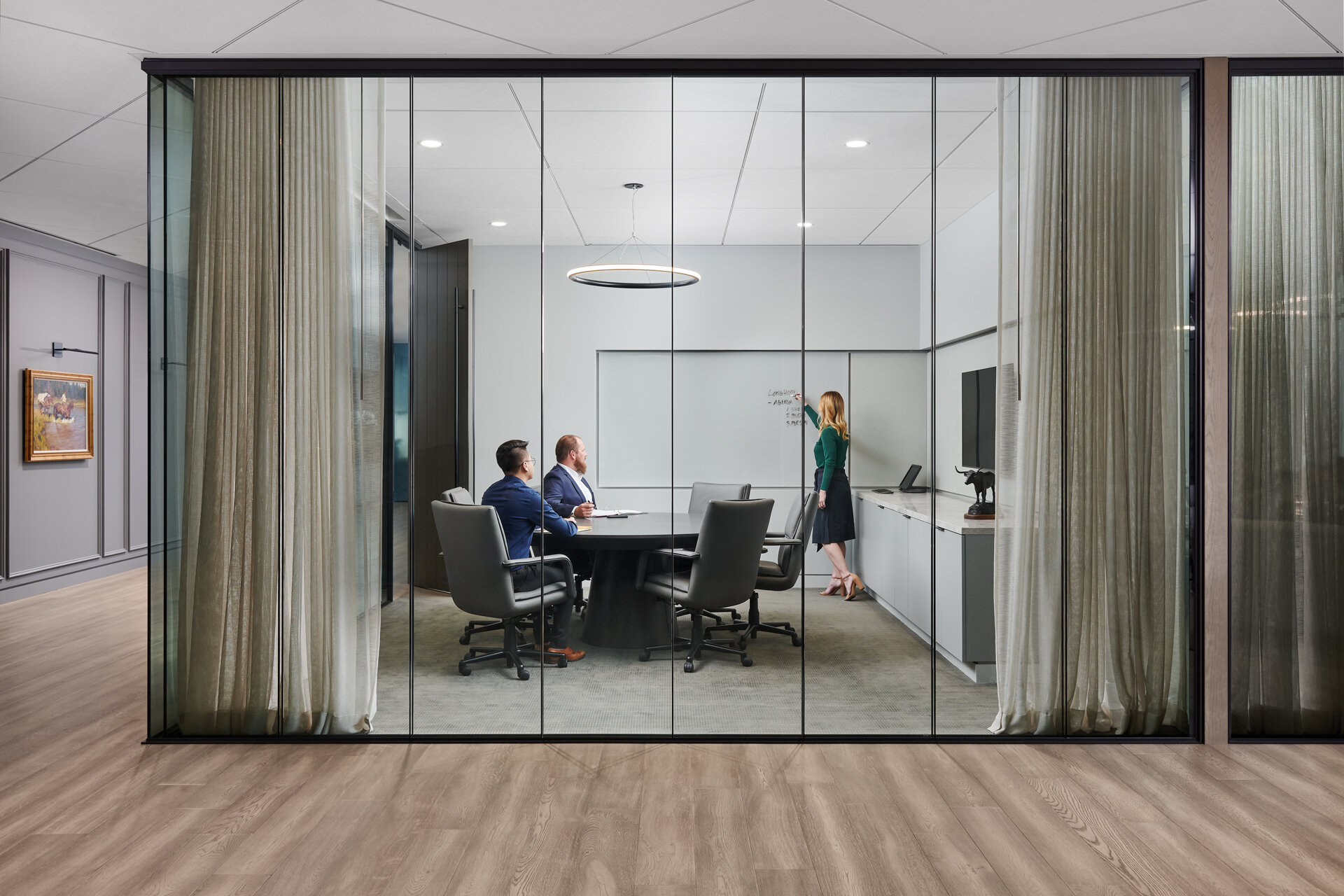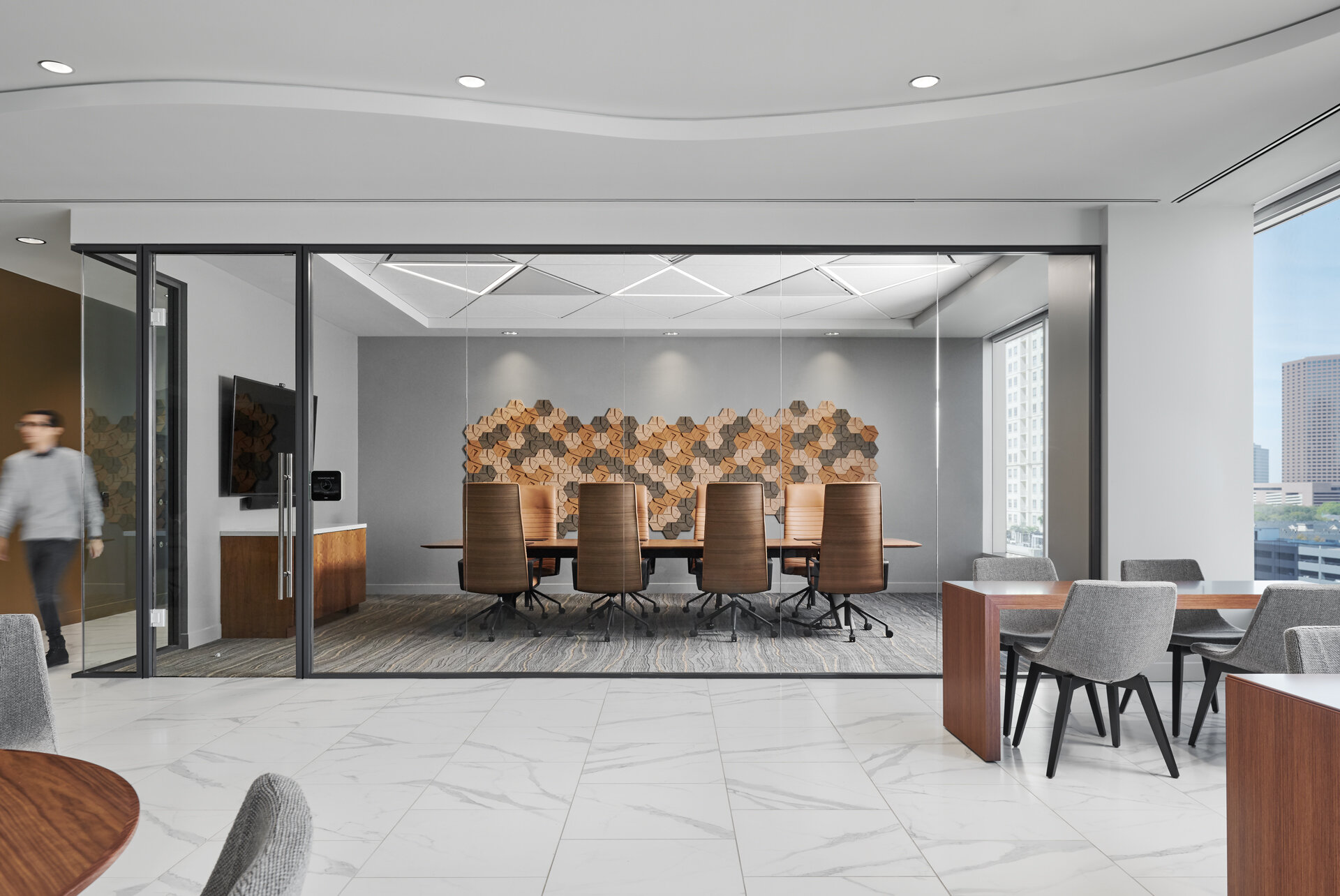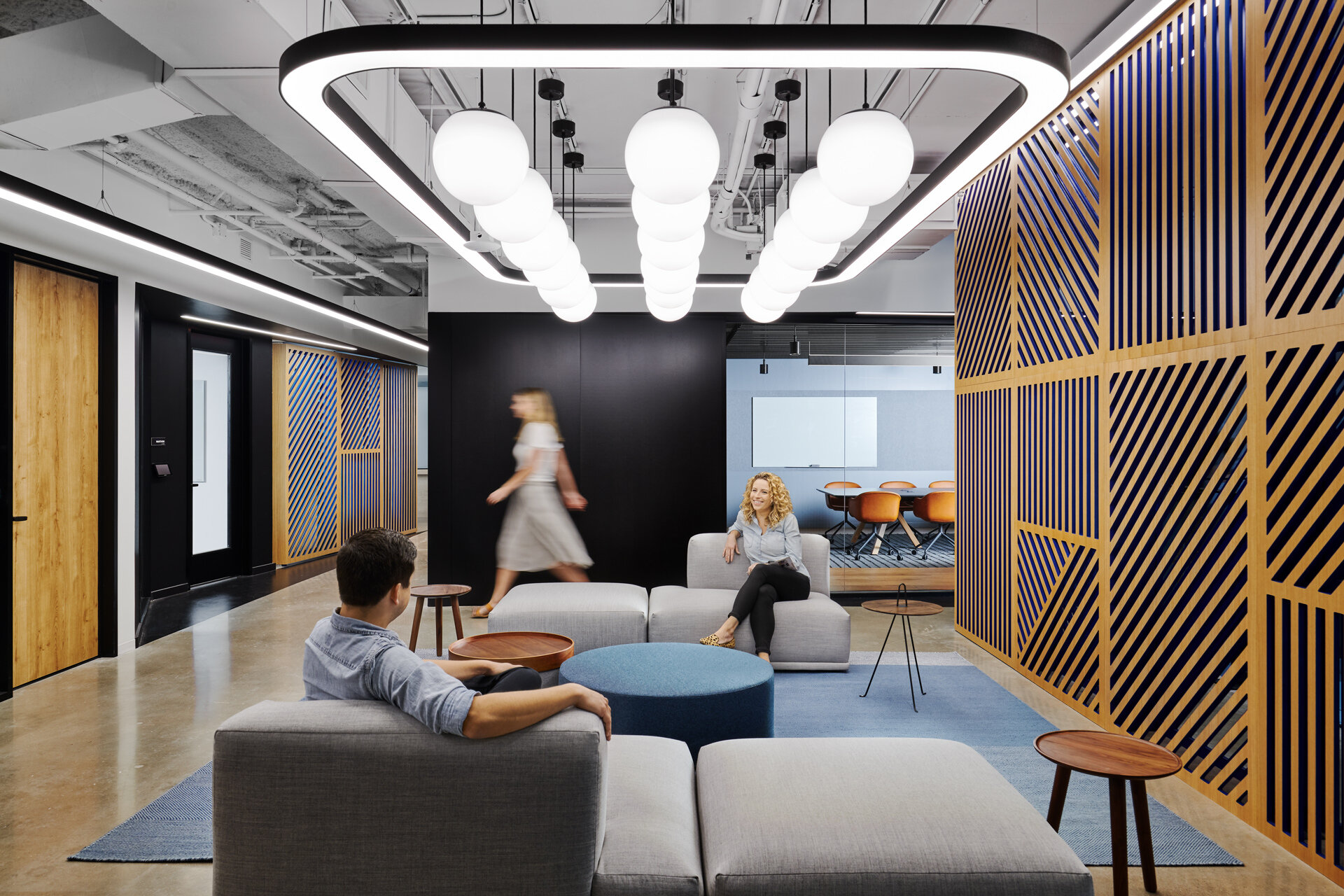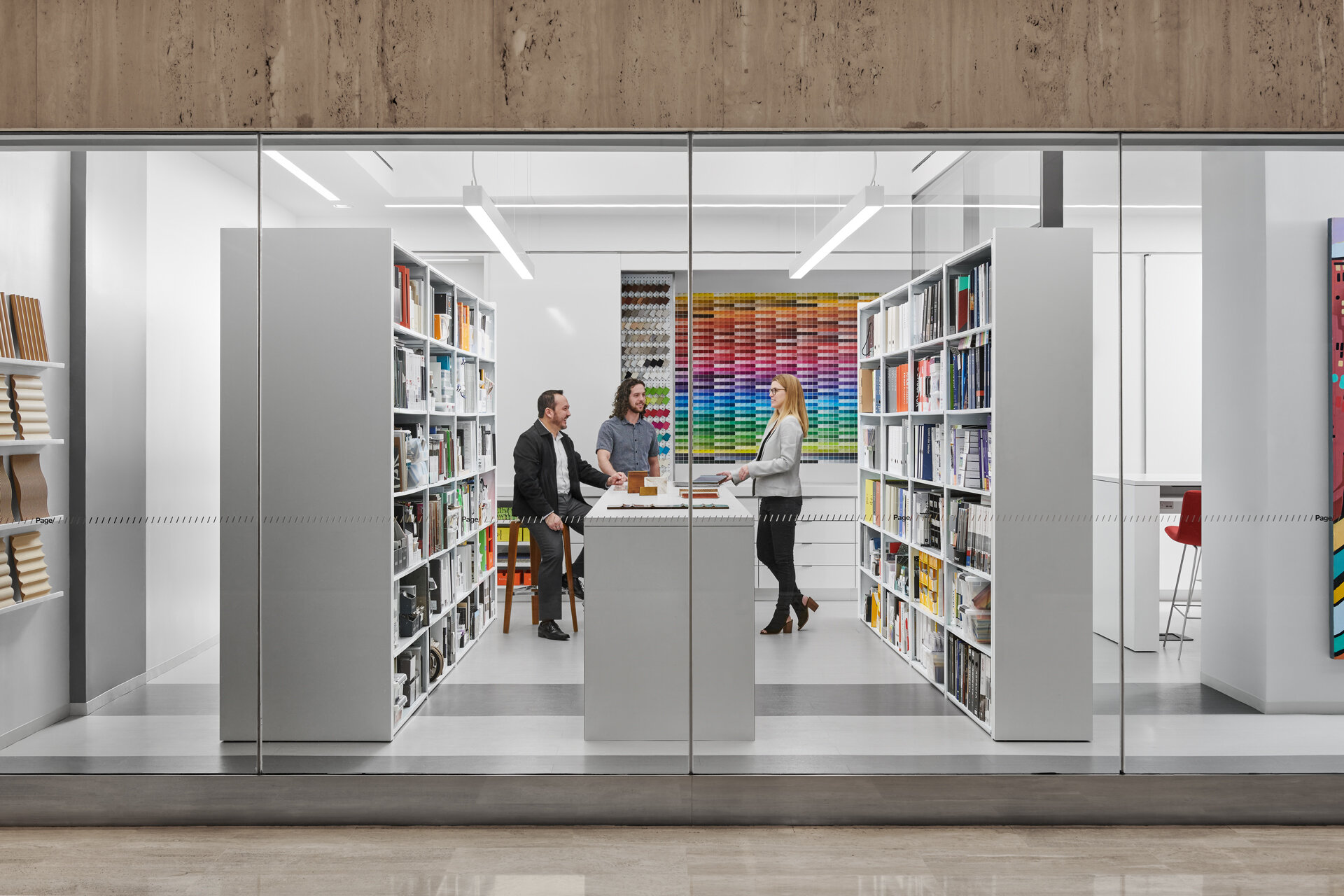Ahh, reflections. On set, I will often joke that reflections are the architectural photographer’s arch nemesis. Specifically with commercial and workplace interiors, our objective is generally to show spaces and how they relate as clearly as possible in order to convey the design teams intent without unwanted distractions. One thing that makes this a challenge more than anything else is reflections in glass and other surfaces. Over the years, through a lot of on the job learning, skill sharing with others and trial and error, I have come up with a few techniques that I commonly will employ in order to remove unwanted reflections in order to best tell the story we are trying to convey through a particular image. These can be boiled down to essentially either controlling the offending ambient light on the camera side of the glass or overpowering it within the space that you are trying to show through it. Controlling the ambient light most often means some combination of lighting controls within the space (i.e. turning off all lights on the camera side of the glass that might reflect) or flagging it off using window shades, black fabric/plastic, and other methods. When these options aren’t enough, flash has proven to be an invaluable tool within the space we are trying to convey by overpowering any ambient light therefore removing what is being reflected in the glass from the camera side. Very often we are using several techniques for an individual shot in order to get the best results.




In the video below, I walk through four different scenarios where we were shooting single point perspectives through glazing systems that presented challenges with reflections that we had to troubleshoot in order to get the best shots possible. One thing that helped me greatly over the years is developing an understanding of how reflections work. In the study of photography, we are often taught about the angle of incidence, which is a way of describing how light sources and other objects will be reflected in a subject matter back into the camera. In the case of this topic, it is one of the things that helps me think of what is needed to control objects being reflected into a surface that we are trying to show as transparent. The diagrams below are my attempt at illustrating the angle of incidence when shooting similar shots to the examples below from my video. I have found that our instinct is often to think that all we need to do to control a reflection is build a flag the same size as the surface of the glass area, when really it is far larger. In my career, I’ve done a lot of work photographing for the art community and shooting framed work behind glass was one thing that really helped me get a grasp on this due to the more controllable scale of artwork versus that of architecture and interior spaces. The angle of incidence can be thought of as the reflected angle of that of the projected line from the point of the camera lens to the outer most portions of the reflective surface (glass). This is a complicated concept to describe in writing, so hopefully the diagrams will illustrate this clearly. The import part is to understand that not only are we having to consider what’s directly behind the area of the glass, but also above, below, left and right of that area relative to the camera position and angle. For example, the diagram below shows that the two lights nearest the wall will not be seen in the camera view, but the subsequent to will show up, as will a similar portion of the floor below.
Diagram of the angle of incidence when shooting a single point perspective of a wall with a window in it.
A similar diagram, this time with a flag behind the camera.
Hopefully the above information and below video give some insights on how you can go about troubleshooting similar challenges in your own work and help result in cleaner images for yourself and your clients.


